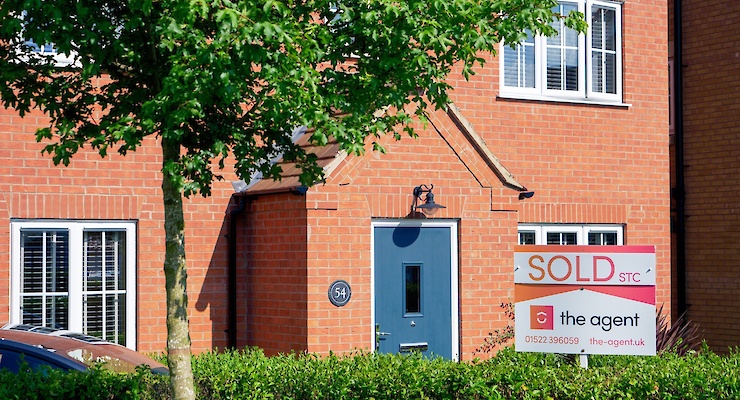


Head of Content

Mortgage Advisor & Director

Fixed-rate mortgages come with a variety of different introductory rates periods, and 2-year fixes are among the most common. In this guide, you can find out everything you need to know about 2-year fixed-rate mortgages, including how they work, what rates to expert, and how to secure the best deal available.
What is a 2-year fixed-rate mortgage?
A 2-year fixed-rate mortgage is a fixed-rate mortgage with an introductory rates period spanning two years. During this two-year period, the amount of interest you are charged will be lower than the lender’s standard variable rate (SVR) and cannot change in that 24 months.
After the two-year initial rates period expires, you will be placed on your lender’s SVR, unless you agree to enter a new deal with them in advance, or remortgage with a new lender.
What happens when your fixed-rate period is up?
You have options when the two-year fixed-rate term is due to expire. Here are the main ones:
Enter another fixed-rate deal with your lender: You don’t have to enter another two-year fixed-rate deal. You could fix for longer, if consistency is what you want - some lenders offer three-year fixes, most offer five, and a minority 10 years plus.
Move to a different type of product with your lender: Your lender will almost certainly offer variable rate mortgages as an alternative to fixed, so it might be worth discussing tracker rate mortgage options with them, as well as other types of variable deal.
Remortgage with a new lender: You could consider moving to a fixed or variable rate deal with a new lender after 24 months. Many people do this in search of a lower interest rate or features that their current mortgage lender doesn’t offer.
Move onto your lender’s SVR: This should only be done after seeking professional advice as SVRs can be expensive. Some borrowers consider this as a temporary measure if they want to make uncapped overpayments before locking back in. Alternatively, it could be an option if your plan is to clear your mortgage balance.
Most mortgage lenders contact their customers at least six months before a two-year fixed-rate agreement is due to expire to upsell a new deal, but you should speak to a mortgage broker before this point to get an overview of your options and access to the entire market.
What is the average rate for a two-year fixed-rate mortgage?
At the time of writing (December 2023), the average interest rate on a two-year fixed-rate mortgage is 5.99%, having recently dropped below 6% for the first time since mid-June. But it’s important to note that securing a rate significantly below the average is possible.
The exact mortgage interest rate you will end up with will depend on the amount of deposit you have and how healthy your credit reports are, among other factors. With a substantial amount of deposit (25-40%) and clean credit, it is possible to secure a rate lower than 5%.
Interest rates spiked following the government’s Mini-Budget in September 2022 and are currently in decline. Traditionally, rates for two-year fixes are lower than longer fixes, such as five-year deals, but the gap between them has narrowed since the market became volatile.
Which lenders offer the lowest rates on two-year fixes?
All UK mortgage lenders offer a range of two-year fixes to cater for borrowers with various loan-to-value (LTV) ratios, with the best rates typically reserved for those with lower LTVs.
The table below shows some examples of the lowest rates for two-year fixed-rate mortgages from some of the UK’s leading mortgage providers, along with product details.
Mortgage Lender | Initial Interest Rate | Product Details |
4.75% | 60% LTV, £999 fee | |
4.74% | 60% LTV, £999 fee | |
5.07% | 75% LTV, £995 fee | |
5.09% | 75% LTV, £999 fee | |
4.70% | 60% LTV, £999 product fee |
The above deals were available at the time of writing (December 2023)
The two-year fixed-rate deals we have listed here have been presented for example purposes. They are among the cheapest available right now, since they are aimed at borrowers with relatively high deposit amounts. All of these lenders have a range of other two-year fixed-rate products available for borrowers with lower deposits, but the rates can be higher.
You can compare rates and deals from these lenders and many more across the whole of the market for free on Teito - see the section below for details on how to get started.
How to compare two-year fixed-rate mortgages
You can compare rates and deals on two-year fixed-rate mortgages for free on Teito. Not only can you see how the rates on these products compare to longer fixes, you can also weigh them up against variable rate mortgages from lenders across the whole of the market.
Follow the steps below to start comparing rates and deals in real time:
Get started here: Then select whether you are looking for a two-year fixed-rate mortgage to buy a property or for remortgage purposes.
Specify the purpose of the property: You can compare two-year fixed-rate mortgages for residential or buy-to-let purposes, as well as remortgages.
Choose your own mortgage: Finally, tell us what stage you are at in the process and you can compare rates from across the market and choose the deal you want.
After you have selected a mortgage that fits your needs, one of our brokers will check over your application before securing an agreement in principle for you. They will be on hand to offer bespoke advice, make sure you’re getting the best deal, and oversee your application.
Should you get a two-year fixed rate or lock in for longer?
The main advantages of two-year fixed-rate mortgages over longer ones is that you have more flexibility to move or remortgage, or take advantage of declining interest rates.
Even if you have to break out of a two-year fixed-rate mortgage early, for whatever reason, the early repayment charges that will be due are likely to be less costly than in a five-year fix.
Here are some questions to consider when pondering how long to fix in for:
What is the current economic outlook?
Research will tell you what economists and analysts are saying about which direction the Bank of England’s base rate is heading in. If interest rates are forecast to rise going forward, it might be wise to lock in for longer if that is an option for you. But if they are likely to steadily decline, you might wish to consider a shorter-term option in the hope of landing a better deal later.
Economic predictions are never an exact science, so be sure to read up on the topic of interest rates and the mortgage market thoroughly before you proceed.
Are you likely to need to move or remortgage soon?
A longer-term fixed-rate mortgage might not be the answer if you only plan on staying in your current property for the next couple of years. Some fixed-rate mortgages can be ported when you move home, but if you are buying a more expensive property, this can be complicated.
If you know you are planning to move elsewhere in the next year or two, planning it so it coincides with your mortgage renewal can make life easier. Even if you need to move or remortgage while locked in, the early repayment charges can be far less on short-term fixes.
Do you prefer flexibility or consistency?
This is essentially what it comes down to when you are trying to decide whether to fix into a mortgage for two years, five years, or even longer. If you are happy for your living situation to remain the same indefinitely, a longer-term fixed-rate mortgage can help you plan and budget, as your mortgage payments will remain consistent for a substantial period.
If, however, you want to move, remortgage, make overpayments on your mortgage, or keep your options open in the event of interest rates dipping, a shorter-term fix could be the answer.

Get your mortgage in principle certificate in 5 minutes
Why choose Teito for your mortgage needs?
You can compare the latest fixed-rate mortgage deals for free on Teito and access support from a whole-of-market broker if you need a little help finding your ideal mortgage.
Here are just some of the reasons people choose our service:
- Exclusive rates and deals are available
- Our brokers are whole-of-market
- We are five-star rated on leading review websites
- It takes just minutes to secure an agreement in principle
Ready to compare two-year fixed-rate mortgage deals and take advantage of a free, no-obligation chat with a whole-of-market broker? Get started here.
FAQs
Should I pay a product fee?
Some two-year fixed-rate mortgages come with a product free while others don’t. Generally speaking, the deals with a product fee have a lower rate, but whether you should pay one will depend on whether you have the capital to make an upfront payment.
Moreover, it is worth having a broker look at deals across the whole of the market for you. The rate one lender is offering for a deal with a product fee might not be much different to the rate another is advertising for a fee-free deal. It’s the overall cost that is important, so be sure to work out how much paying a fee could save you across the entire mortgage term.
It’s also worth noting that some lenders will let you add the product fee to the mortgage amount, as long as you don’t mind paying interest on it across the whole of the term.
Are there two-year fixed-rate buy-to-let mortgages?
Yes. Two-year fixed-rates are among the most popular types of buy-to-let mortgage among UK landlords. Find out how to compare buy-to-let mortgage rates and deals here.
Can you get a shorter fixed-rate mortgage than two years?
A minority of mortgage lenders are now offering one-year fixed-rate mortgages, but these are largely limited to existing customers who are renewing their mortgage.
Choosing an Adviser
Selecting a qualified and experienced mortgage adviser is of great importance. To choose a suitable adviser, evaluate their qualifications, experience, and reputation, and ensure they are regulated by the Financial Conduct Authority (FCA).
Read reviews from previous clients and make sure they provide a clear explanation of the products and services they offer, as well as the fees and charges associated with them.
Last updated 21 February 2024





























































